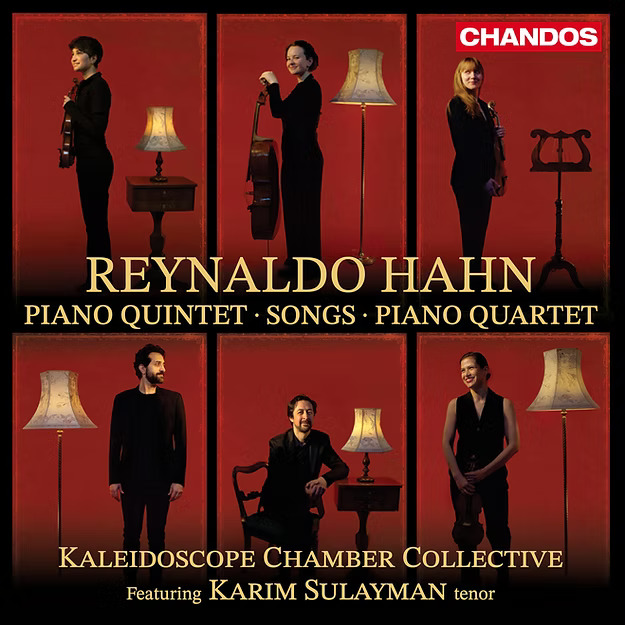 Reynaldo Hahn: Piano Quartet, Piano Quintet, Songs Karim Sulayman (tenor), Kaleidoscope Chamber Collective (Chandos)
Reynaldo Hahn: Piano Quartet, Piano Quintet, Songs Karim Sulayman (tenor), Kaleidoscope Chamber Collective (Chandos)
I’ve been a fan of the Kaleidoscope Chamber Collective for some time, having heard them in concert and on their excellent previous albums, which often seek out under-recorded composers and give them the spotlight: Samuel Coleridge-Taylor, Fanny Mendelssohn, Alma Mahler, Luise Adolphe le Beau. This album is another example of that, comprising chamber and vocal pieces by Reynaldo Hahn (1874-1947), not someone whose music I was previously familiar with. From being a darling of fin de siècle Paris salons, he became something of a stylistic anachronism in his later years, but it is a feature of Kaleidoscope recording projects to find voices sidelined in their own time: the avant-garde was not the only locus for worthwhile music.
The vocal element on this album are six songs, sung by tenor Karim Sulayman, with accompaniments arranged by Kaleidoscope’s Artistic Director Tom Poster for string quartet (in two cases, piano quartet). Although described by BBC Music Magazine as having “pop-star charisma,” Sulayman’s singing here is humble and understated. The very Bachian opening number, “À Chloris”, is like an aria from a cantata. Sulayman is more languid in “Le Rossignol des lilas”, which renders perfectly for string quartet. Perhaps the best is saved for last: “La Barcheta”, in Venetian dialect, Sulayman swaying with aching romance, the plucked strings emulating mandolins in support. It feels like a song you have always known, and is very winningly sung.
The two big chamber pieces are in a different mode. The Piano Quintet is an early work, very much in the vein of Fauré, admired by Hahn. The textures are transparent – both in their scoring and their realisation by the string players Elena Urioste, Savitri Grier, Rosalind Ventris and Laura van der Heijden. The quiet central passage in the first movement, an island in the middle of con fuoco ripples on the piano, is swooningly beautiful. The slow movement is all drooping elegance that conjures up the world of Marcel Proust (Hahn’s lover) while the last movement has a perky freshness captured in Poster’s spry playing. The Piano Quartet is a much later work, dating from Hahn’s last few years, when he (a Jew) escaped occupied France to live in Monaco. But the music doesn’t reflect any of the angst and ugliness of the time, rather inhabiting the same refined musical world as the earlier quintet. There are beautifully judged dialogues between the strings, who move seamlessly from foreground to background, with something of the easy geniality of Saint-Saëns, another of Hahn’s friends. But for all the chic sheen of the chamber music, it is the songs I know I will be returning to. Bernard Hughes
![]() Vivaldi: The Four Seasons Daniel Pioro (violin and director), Manchester Camerata, with Michael Morpurgo (speaker) (Platoon)
Vivaldi: The Four Seasons Daniel Pioro (violin and director), Manchester Camerata, with Michael Morpurgo (speaker) (Platoon)
We’ve all got multiple recordings of Vivaldi’s Four Seasons on the shelf, so why bother with a new one? For such a popular work, this set of concertos has had a surprisingly short recorded history. American violinist Louis Kaufman’s 1947 disc did much to familiarise listeners with the music and his performance is easily accessible on YouTube: it’s a glimpse of another world, Vivaldi’s Winter beginning with legato string chords. Compare it with Daniel Pioro’s new version. This is far swifter, the Manchester Camerata’s upper strings channelling Bernard Herrmann, Arngeir Hauksson’s baroque guitar adding flecks of menace. This performance emphasises the extremes; the dissonances accentuated, the articulation razor-sharp. I loved it, and producer Brett Cox captures every last detail. Pioro’s “Largo” really moves but remains lyrical, David Gordon’s harpsichord continuo nicely present in the mix.
Spring’s first movement opens with a force that suggests Stravinsky’s “whole earth cracking”, but retains its charm. The “Largo” sees the tutti strings reduced to a whisper, Pioro soaring above, catching a breath before diving into the finale. The storm which closes Summer is terrifying. Great fun, then: this is a performance to shock, awe and delight, Pioro’s charisma persuasive even when he’s being outlandish. Vivaldi published the works with four sonnets, each one mirroring the music in detail. This release comes with a contemporary update in the form of four new poems, written and read by former Children’s Laureate Michael Morpurgo. Details from Vivaldi’s texts reappear in a new guise, and, in the light of recent weather events, it’s chastening to read about “the monster-gale that shakes windows and doors/That whines and shrieks outside” and a moment when “we are as frozen as the world about us/Feet, fingers, ears, nose, ache with it”. Morpurgo’s Winter is especially poignant (“We dream of spring, and wake to winter”) though he points out that dogs, porridge and hot soup can help us get through cold spells in one piece. The poems are placed at the start of the album – I’d suggest listening to each one before diving into the concerto it illustrates.
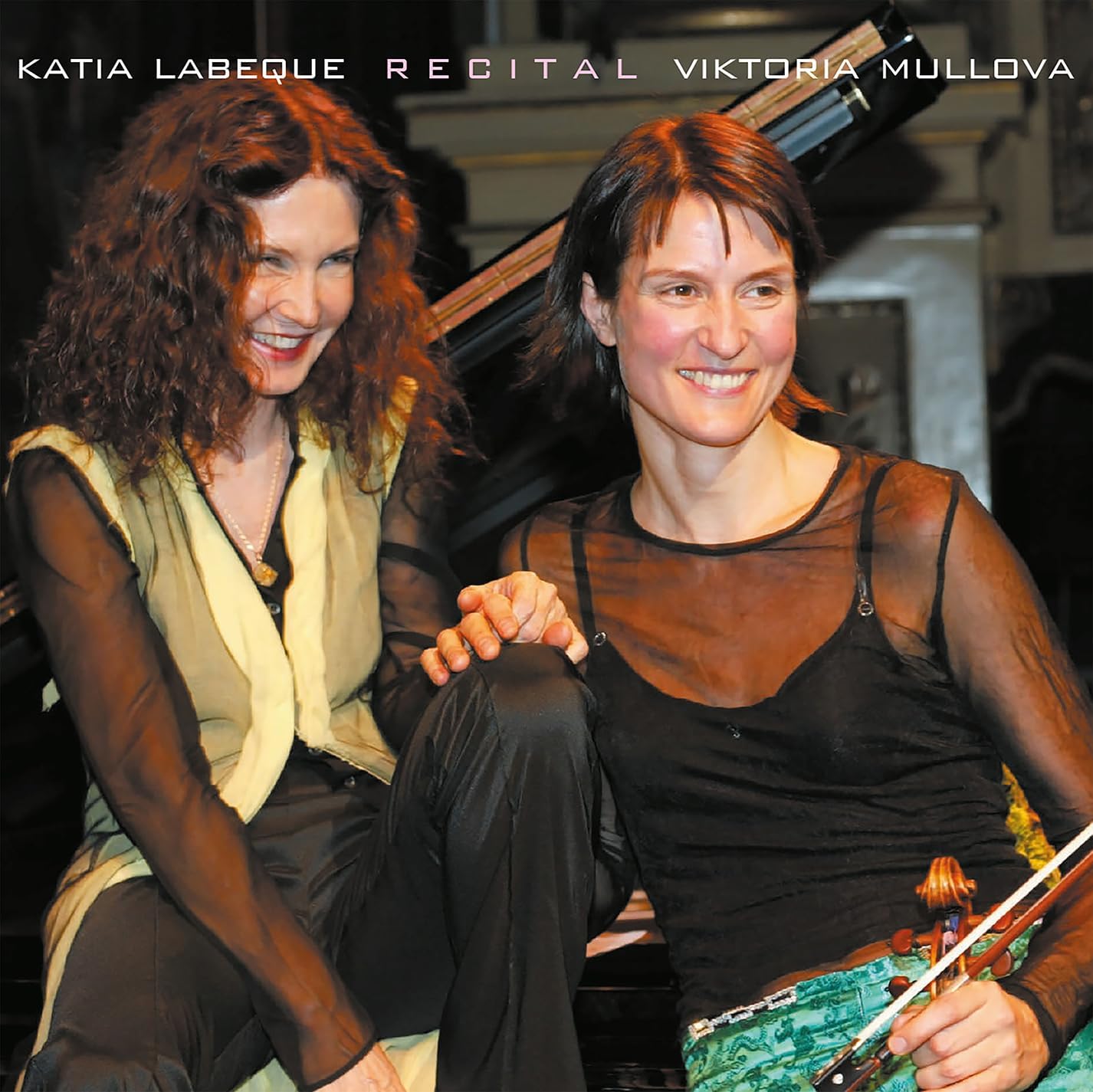 RECITAL: works by Stravinsky/Dushkin, Schubert, Ravel, Clara Schumann Viktoria Mullova (violin). Katia Labèque (piano) (Signum)
RECITAL: works by Stravinsky/Dushkin, Schubert, Ravel, Clara Schumann Viktoria Mullova (violin). Katia Labèque (piano) (Signum)
Welcome to the un-factchecked world. At least two of the main streaming services are (at the time of writing) listing Recital either with an instruction to “Listen to Latest Release” (Spotify), or as “NEW” (Amazon). ‘Latest release’ is, to say the least, highly debatable. ‘New’ it definitely ain’t. Originally on Onyx, this recital was recorded at IRCAM in Paris in November 2005. That said, there is a plenty to enjoy in these mature and confident readings, which are now offered with Joanna Wyld’s clear and informative original sleeve note from 2006.
What is fascinating to hear is quite how dramatically Mullova’s concept of playing repertoire of the classical period has changed, whether through working with fortepianists Alistair Beatson or Kristian Bezuidenhout...through (I read) playing on gut strings...or simply through living in today’s historically informed/Pat Kop-ish sound world. The atmosphere created in the first movement is magical in both versions, but these two recordings are worlds apart. In Mullova’s 2005 recording of the Schubert C Major Fantasie, there is surely still plenty to be heard of the living legacy of Leonid Kogan (a live recording from 1981 with his daughter Nina is available on Arlecchino). By contrast, Mullova’s recording of the Schubert– the first album she made for Signum and released in 2022 – is aiming for and achieving very different ideals; it just needs to be heard alongside this thoughtful and persuasive 2005 version.
The Stravinsky/Dushkin Suite Italienne brings total authority, heft, and wonderfully clean and expressive double-stopping – (for the legacy of this one I couldn’t help going back to Igor Oistrakh, recorded by Eterna in newly-walled East Berlin in 1962). The Pulcinella story is one which she would, surely, tell very differently now. Having been fascinated by Music We Love, the recent album from Mullova’s duo with her son, jazz bassist Misha Mullov-Abbado (try “Blue Deer”), it is evident that her playing of the “Moderato: Blues” from Ravel’s Second Violin Sonata will have been transfigured too. But as to the question of how much smokier, greasier and longer-limbed now than it was in 2005. It would be fascinating to have the chance to find out. Sebastian Scotney
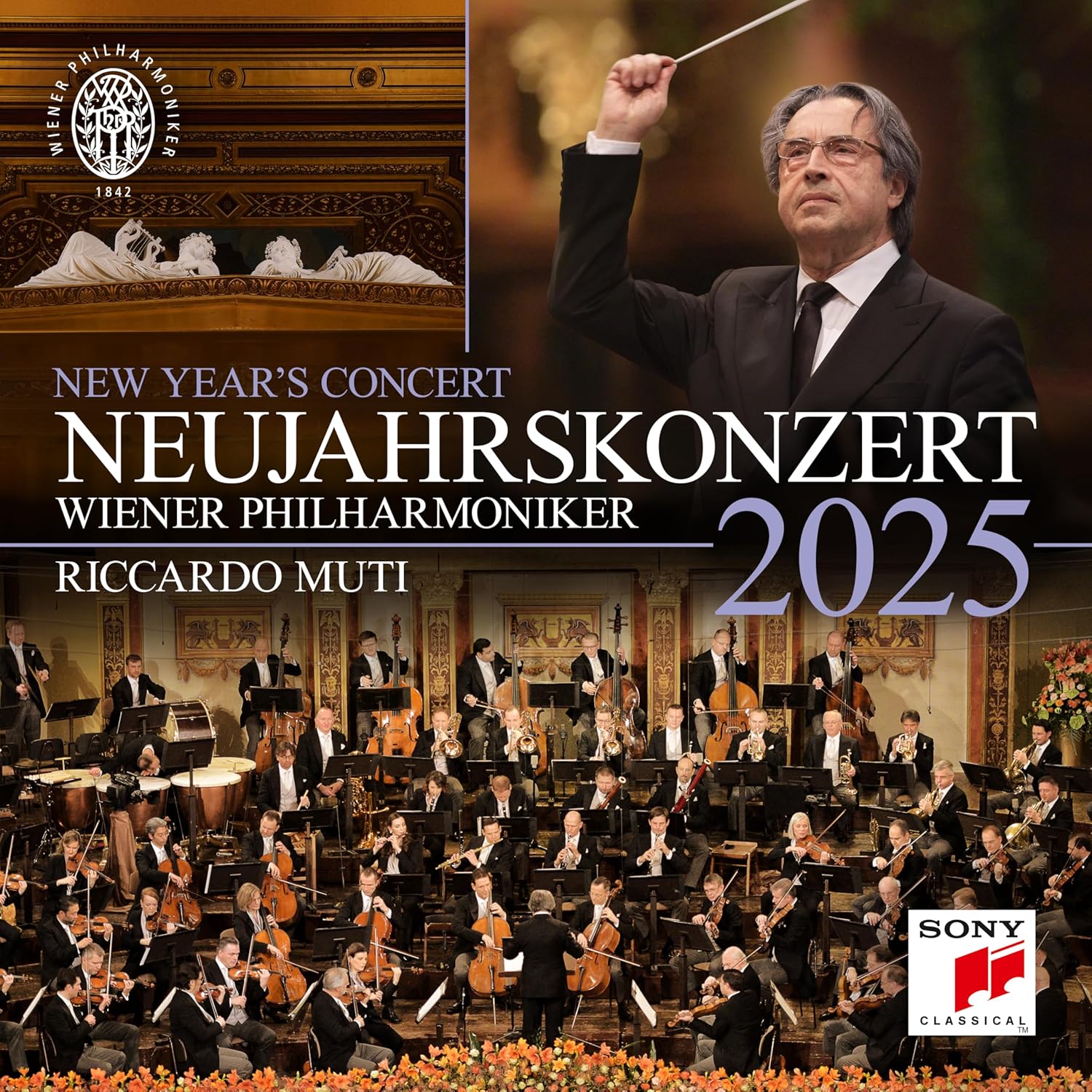 New Year’s Concert 2025 Wiener Philharmoniker/Riccardo Muti (Sony)
New Year’s Concert 2025 Wiener Philharmoniker/Riccardo Muti (Sony)
The rush to release each year’s Vienna Philharmonic New Year’s Day Concert is like a musical Beaujolais Nouveau race, and that a handsomely produced physical product can be made globally available within three weeks of recording is a logistical triumph. Though the sleeve notes never tell us how far in advance the selection of waltzes and polkas is chosen, or who actually makes the selection. This fresh instalment is Riccardo Muti’s seventh turn, making him “the most experienced of all living New Year’s Concert conductors”. He’s a novice compared to some of the non-living ones: Willi Boskovsky led proceedings 24 times and Lorin Maazel made ten appearances. I’m always curious to hear each concert’s novelties, the big draw here being the first appearance of a waltz by a female composer. Constanze Geiger’s “Ferdinandus-Waltzer”, first heard in 1848 when its composer was just 12, is charming, a glance at Geiger’s biographical details making you curious to know more. I’d not heard of Joseph Hellmesberger II either, a former Vienna Philharmonic violinist who later led parallel careers as a conductor and composer. His “Fidele Brüder” is a jolly but ultimately unmemorable march sourced from a 1904 operetta.
Both pieces serve to illustrate just how good the Strauss family were at this stuff. Half of the items here were written by Johann Strauss II, 2025 being his 200th anniversary year. Muti sounds as if he’s genuinely enjoying himself and the playing is predictably polished. Sample the ebb and flow of the “Demolirer Polka” or “Accelerationen”, a waltz celebrating technological advancement composed for an 1860 Ball of Industry and Technology. Josef Strauss’s oddly titled “Transactionen” is fun, and his brother’s “Tritsch-Tratsch” polka is very schnell and really zips along. We get the usual encores, the Viennese horns refulgent in “An der schönen blauen Donau”, Muti making the intro sound like Richard Strauss.
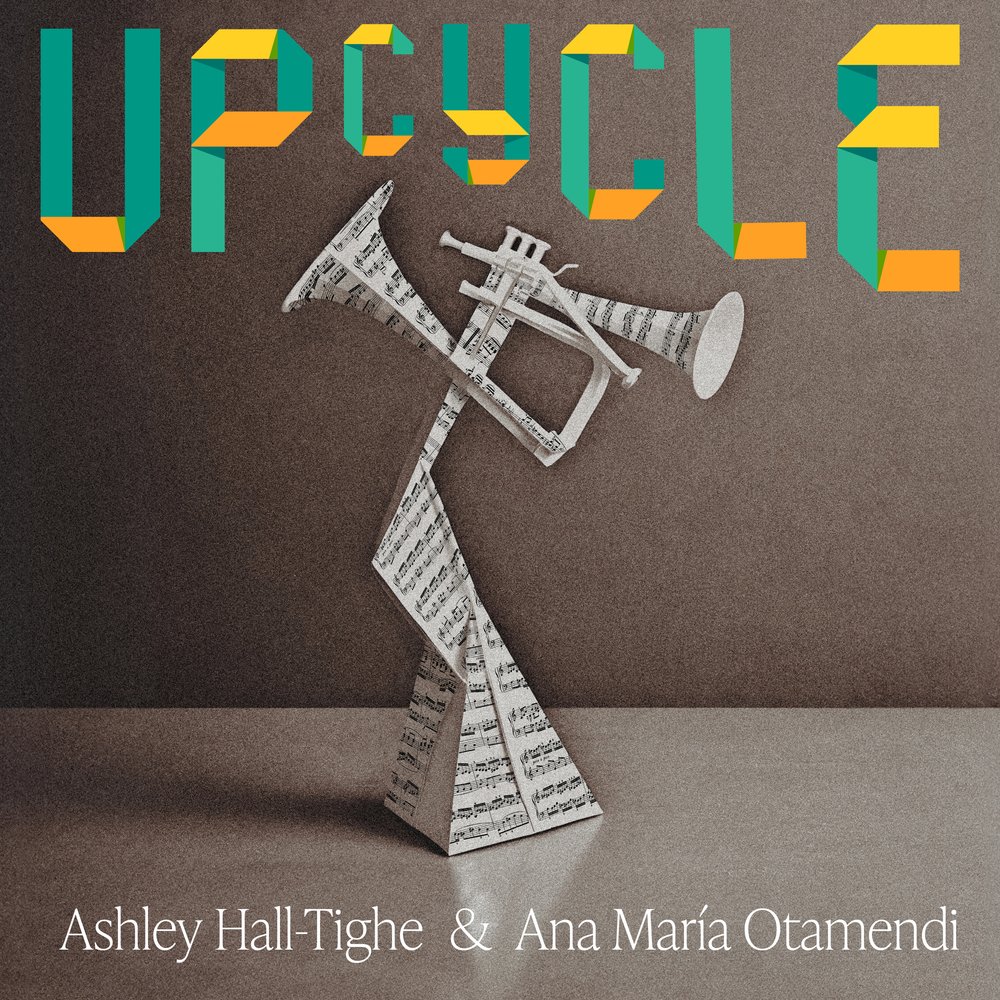 Upcycle Ashley Hall-Tighe (trumpet), Ana María Otamendi (piano) (Rezurrection Records)
Upcycle Ashley Hall-Tighe (trumpet), Ana María Otamendi (piano) (Rezurrection Records)
Tallā Rouge: Shapes in Collective Space (Bright Shiny Things)
I tend to avoid the term "mission statement", but US indie label Bright Shiny Things has a decent one on its website: We get 21st-century classical musicians, and we get it done. Here are two recent BST releases that have caught my ear, both brilliantly performed and nicely recorded. Unlike many new imprints the label hasn’t abandoned producing CDs, their physical releases invariably nicely designed with distinctive artwork. Upcycle, unusually, doesn’t contain any 21st century music. Instead, it’s a selection of short pieces from composers as diverse as Bach and Albeniz, transcribed for trumpet and piano, offering “a vision of what might have been possible if the modern trumpet was a solo instrument at the time these works were conceived.” Trumpeter Ashley Hall-Tighe plays with a winning blend of warmth and steel, beautifully accompanied by pianist Ana María Otamendi in arrangements made by Hall-Tighe’s husband Nathaniel. The prelude from Bach’s English Suite No. 2 is dazzling, the Sammartini recorder concerto which follows showing us Hall-Tighe’s lyrical side. Study the track listing and you’ll wonder how on earth these works will survive their transmogrification. Fear not. Hall-Tighe and Otamendi rise to every challenge: listen to their version of “El Puerto” from Book 1 of Albéniz’s Iberia, Hall-Tighe closing with a fiendish sustained high note. The “Adagio sostentuto” from Rachmaninov’s Six moments musicaux is gorgeous, followed by an idiomatic version of Clara Schumann’s G minor Piano Sonata and miniatures by Grieg, Sibelius and Chopin. An enchanting disc, and one of the best solo trumpet recitals I’ve heard.
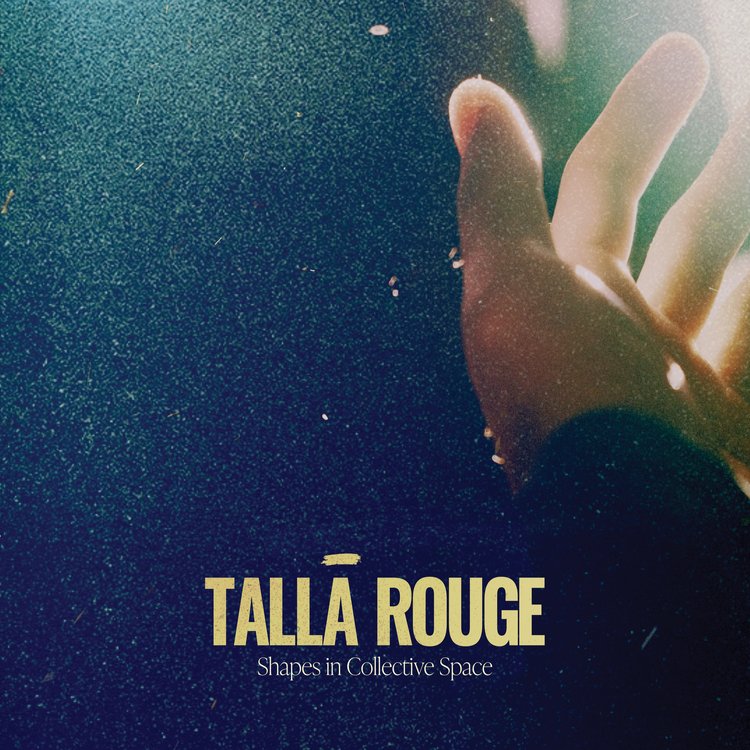 Tallā Rouge are Aria Cheregosha and Lauren Spaulding, a self-styled Persian/Cajun viola duo who currently hold a residency at Harvard University’s Dumbarton Oaks. Shapes in Collective Space is a collection of 10 contemporary pieces, presumably in first recordings, a reflection on “life’s fleeting yet profound moments”. Karl Mitze’s dancing “Seesaw” is an exuberant opener: listen through headphones and you can hear the players switching lead and accompanist roles every few bars, the coordination peerless. Gemma Peacocke’s “Fluorescein” has a brightness reflecting its title, Peacocke making simple triadic harmony glow until the work dissolves in the final bars. inti figgis-vizueta’s title track begins in a mood of uncertainty, inching cautiously towards warm positivity. Gala Flagello’s “Burn as Brightly” has unstoppable energy, while time stands still in Akshaya Avril Tucker’s “Breathing Sunlight”. The four sections of Kian Ravaei’s “Navazi” are spread out over the disc, and Leilehua Lanzilotti’s “silhouette, mirror” doesn’t so much stop as evaporate. Cheregosha and Spaulding play beautifully throughout. I’m a brass player, so a disc of viola duets is way out of my comfort zone. I shouldn’t have worried: this is an immediately accessible and musically absorbing disc, beautifully recorded.
Tallā Rouge are Aria Cheregosha and Lauren Spaulding, a self-styled Persian/Cajun viola duo who currently hold a residency at Harvard University’s Dumbarton Oaks. Shapes in Collective Space is a collection of 10 contemporary pieces, presumably in first recordings, a reflection on “life’s fleeting yet profound moments”. Karl Mitze’s dancing “Seesaw” is an exuberant opener: listen through headphones and you can hear the players switching lead and accompanist roles every few bars, the coordination peerless. Gemma Peacocke’s “Fluorescein” has a brightness reflecting its title, Peacocke making simple triadic harmony glow until the work dissolves in the final bars. inti figgis-vizueta’s title track begins in a mood of uncertainty, inching cautiously towards warm positivity. Gala Flagello’s “Burn as Brightly” has unstoppable energy, while time stands still in Akshaya Avril Tucker’s “Breathing Sunlight”. The four sections of Kian Ravaei’s “Navazi” are spread out over the disc, and Leilehua Lanzilotti’s “silhouette, mirror” doesn’t so much stop as evaporate. Cheregosha and Spaulding play beautifully throughout. I’m a brass player, so a disc of viola duets is way out of my comfort zone. I shouldn’t have worried: this is an immediately accessible and musically absorbing disc, beautifully recorded.
 Praise Him with Trumpets Bristol Choral Society/Hilary Campbell et al (Delphian)
Praise Him with Trumpets Bristol Choral Society/Hilary Campbell et al (Delphian)
Hilary Campbell, Bristol Choral Society’s enterprising Musical Director, last featured in this column as composer, on the Corvus Consort’s 2024 album Welcome Joy. Here she is back in front of the choir, and is the programming mind behind this varied and colourful album exploring the idea of “praise”. Despite the title, trumpets only appear on two of the tracks: Judith Weir’s eponymous anthem and Elizabeth Poston’s Festal Te Deum, but they make a disproportionate impact. The Weir is in the line of her choral pieces that incorporate unusual accompanying instruments (check out, for example, her splendid All the Ends of the Earth for choir with marimba). In Praise Him with Trumpets Neil Brough and Jo Harris set the tone brilliantly from the start, with sparkling, dancing fanfares which resonate vividly in the acoustic of Clifton College Chapel in Bristol. The choral writing builds to an equally extrovert climax, with the Bristol Choral Society singers rising to the occasion.
Elizabeth Poston also featured on the Corvus Consort album and it is good to see her music getting wider attention these days. The Festal Te Deum is a rousing closer, only re-discovered in 2018 after being lost for nearly 60 years. Again the trumpets set the tone of vivacious celebration and the again the choir finds an appropriately buoyant reading, subsiding to a touching fade-away ending. Grace-Evangeline Mason’s A Memory of the Ocean has a different, more reflective tone, the choir here accompanied by Steven Kings on piano and Evva Mizaerska on cello. Inspired by Vaughan Williams’ A Sea Symphony it gently unfolds with hymnic choral chords decorated by piano arabesques and impassioned cello lines.
Elsewhere, there are breaks for the choir provided by solo items for soprano Charlotte Mobbs, with Steven Kings. Cecilia McDowall’s Four Shakespeare Songs are sung with poise and crystal clarity. “What ‘tis to love” has a lovely languidness, while “Give me my robe” has the assertive rhetoric of a miniature dramatic scena. Of the rest, Holst’s Psalm CXLVIII was a very enjoyable new discovery, and it’s always good to hear Britten’s Rejoice in the Lamb, garlanded with excellent solos by Emily Wenman, Phillipa Thomas, Robert Jenkins and Lawrence White, all making the best of their moment in the spotlight. Bernard Hughes

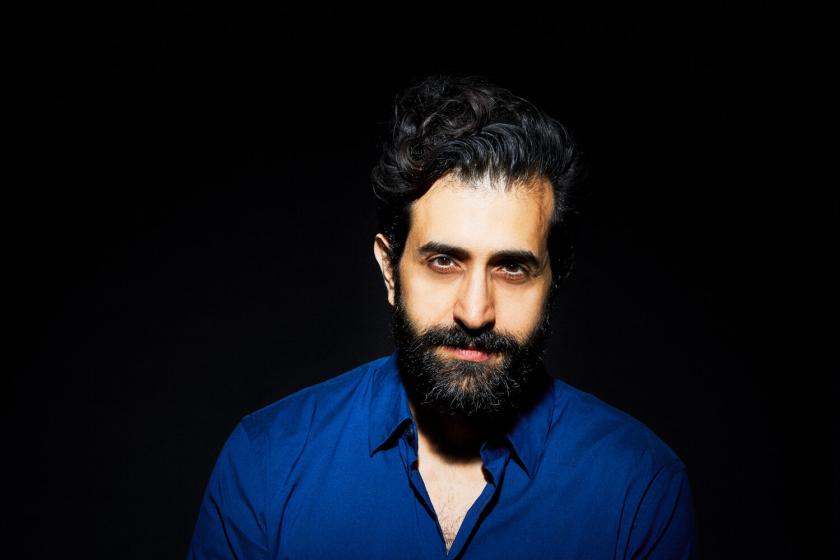

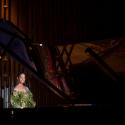
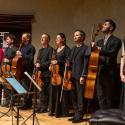
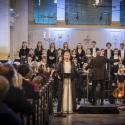
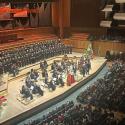

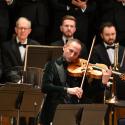
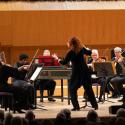



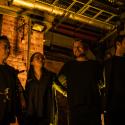
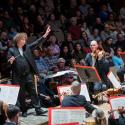
Add comment